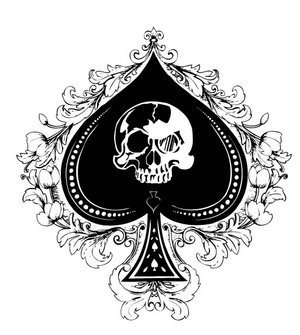The Ace of Spades
 I have a standard deck of 51 cards, with one missing Ace. I shuffled the cards and the cards then turned up one by one from the top until the second ace appears. What is the expected number of cards to be turned up?
I have a standard deck of 51 cards, with one missing Ace. I shuffled the cards and the cards then turned up one by one from the top until the second ace appears. What is the expected number of cards to be turned up?
This problem is adapted from a past USAMO.
The answer is 26.
This section requires Javascript.
You are seeing this because something didn't load right. We suggest you, (a) try
refreshing the page, (b) enabling javascript if it is disabled on your browser and,
finally, (c)
loading the
non-javascript version of this page
. We're sorry about the hassle.
Symmetry is the key. If the second ace appears in position a , by reversing the deck the second ace appears in position 5 2 − a , hence the expected value is just 2 6 .